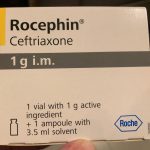Why Are They Called Respiratory Fluoroquinolones?

Respiratory fluoroquinolones are a specific class of fluoroquinolone antibiotics that are commonly used to treat respiratory tract infections. Fluoroquinolones are a group of synthetic antibiotics known for their broad spectrum of activity against various bacteria. Respiratory fluoroquinolones are a subclass of fluoroquinolones chosen for their effectiveness in treating infections in the respiratory system.
Respiratory fluoroquinolones are chosen for their ability to penetrate lung tissues effectively, making them suitable for treating infections in the lower respiratory tract. They work by inhibiting the DNA gyrase or topoisomerase IV enzymes in bacteria, which are essential for DNA replication and repair. This disruption ultimately leads to bacterial cell death.
While respiratory fluoroquinolones can be effective in treating respiratory infections, they are generally reserved for cases where other antibiotics may be less suitable due to factors such as resistance patterns or allergies. It’s important to note that fluoroquinolones, including respiratory fluoroquinolones, can have potential side effects and should be used under the guidance of a healthcare provider. Additionally, their use should be carefully considered due to concerns about antibiotic resistance and potential adverse effects. Always follow your healthcare provider’s instructions when taking any medication, including respiratory fluoroquinolones.
Here is a list of some common respiratory fluoroquinolones along with the respiratory conditions they are often used to treat:
1. Levofloxacin (Levaquin):
• Community-Acquired Pneumonia (CAP): Levofloxacin is prescribed for the treatment of CAP, which is a type of pneumonia acquired outside of healthcare facilities. It is effective against various bacterial pathogens commonly responsible for CAP, including Streptococcus pneumoniae and Haemophilus influenzae.
• Hospital-Acquired Pneumonia (HAP): In cases of pneumonia acquired during a hospital stay or healthcare-related infections, levofloxacin may be used as part of the treatment regimen. It targets a broad range of bacteria, including those associated with HAP, such as methicillin-resistant Staphylococcus aureus (MRSA).
• Chronic Bronchitis: Levofloxacin is used to treat chronic bronchitis, an inflammation of the bronchial tubes in the lungs often caused by bacterial infections. It helps alleviate symptoms and clears bacterial pathogens responsible for the condition.
• Acute Exacerbations of Chronic Obstructive Pulmonary Disease (COPD): Levofloxacin can be prescribed to manage acute exacerbations of COPD when there is a bacterial component to the exacerbation. It helps in clearing the infection and reducing symptoms.
• Sinusitis: Levofloxacin is effective against bacteria commonly associated with acute bacterial sinusitis, a condition characterized by inflammation and infection of the sinuses.
• Skin and Soft Tissue Infections (Including Respiratory Tract Infections): Levofloxacin may be used to treat a range of skin and soft tissue infections, including those related to the respiratory tract, when the causative organisms are susceptible to this antibiotic.
2. Moxifloxacin (Avelox):
• Community-Acquired Pneumonia (CAP): Moxifloxacin is commonly prescribed for the treatment of CAP, targeting various bacteria responsible for the infection.
• Acute Bacterial Sinusitis: Moxifloxacin is effective in treating acute bacterial sinusitis, a condition characterized by infection and inflammation of the sinuses.
• Chronic Bronchitis: Moxifloxacin may be used to treat chronic bronchitis when bacterial infection is suspected as a contributing factor to the condition.
• Acute Exacerbations of Chronic Obstructive Pulmonary Disease (COPD): In cases where bacterial infection is involved in acute exacerbations of COPD, moxifloxacin may be prescribed to manage the exacerbation and improve lung function.
It’s important to note that the use of respiratory fluoroquinolones may vary depending on factors such as the specific bacteria causing the infection, local antibiotic resistance patterns, and the patient’s individual medical history. These antibiotics should only be prescribed by a healthcare provider, and their use should be guided by appropriate diagnostic tests and clinical judgment.
Additionally, due to concerns about antibiotic resistance and potential side effects associated with fluoroquinolones, healthcare providers typically reserve them for cases where other antibiotics may be less effective or appropriate. The choice of antibiotic should always be made in consultation with a healthcare professional.
Why is Cipro not a respiratory fluoroquinolone?
One of the key reasons why ciprofloxacin is not classified as a “respiratory fluoroquinolone” and is generally not considered a first-line option for community-acquired pneumonia (CAP) is its limited activity against Streptococcus pneumoniae. S. pneumoniae is one of the most common bacteria responsible for causing CAP, and effective antibiotics used to treat this type of pneumonia need to have reliable coverage against it.
Respiratory fluoroquinolones like levofloxacin and moxifloxacin, on the other hand, are specifically chosen for their superior activity against S. pneumoniae, in addition to their ability to target a broader range of respiratory pathogens. This makes them better suited for treating CAP, especially when the causative organism is suspected to be S. pneumoniae.
While ciprofloxacin may still have a role in certain cases of respiratory infections, its limited coverage of S. pneumoniae and its broad-spectrum nature make it a less ideal choice for the treatment of CAP compared to other antibiotics specifically designed for respiratory tract infections. Healthcare providers typically consider the specific causative organism, antibiotic resistance patterns, and individual patient factors when selecting the most appropriate antibiotic for a given respiratory infection.
Side Effects Of Respiratory Fluoroquinolones
Respiratory fluoroquinolones, like other antibiotics, can have potential side effects. It’s essential to be aware of these side effects and discuss them with your healthcare provider when prescribed these medications. Common side effects of respiratory fluoroquinolones may include:
1. Gastrointestinal Disturbances: These antibiotics can lead to gastrointestinal symptoms such as nausea, vomiting, diarrhea, or abdominal pain. Taking the medication with food may help alleviate these symptoms.
2. Headache: Some individuals may experience headaches while taking respiratory fluoroquinolones.
3. Dizziness and Lightheadedness: These medications can sometimes cause dizziness or a feeling of lightheadedness, which can affect your ability to perform certain activities safely.
4. Tendon Problems: Fluoroquinolones, including respiratory fluoroquinolones, have been associated with an increased risk of tendonitis and tendon rupture, particularly in older adults. If you experience any tendon pain, swelling, or weakness, it’s crucial to inform your healthcare provider immediately.
5. Photosensitivity: Some individuals may become more sensitive to sunlight while taking fluoroquinolones, leading to sunburn more easily. It’s advisable to use sunscreen and protect your skin from excessive sun exposure.
6. CNS (Central Nervous System) Effects: Rarely, respiratory fluoroquinolones may cause central nervous system side effects such as confusion, hallucinations, or tremors. If you experience any unusual neurological symptoms, seek medical attention.
7. Cardiac Effects: In some cases, these antibiotics can prolong the QT interval on an electrocardiogram (ECG), potentially leading to heart rhythm abnormalities. If you have a history of heart problems or are taking medications that affect heart rhythms, it’s essential to inform your healthcare provider.
8. Allergic Reactions: While uncommon, allergic reactions to fluoroquinolones can occur, leading to symptoms such as rash, itching, swelling, severe dizziness, or difficulty breathing. Seek immediate medical attention if you experience any signs of an allergic reaction.
9. Clostridium difficile Infection: Like many antibiotics, fluoroquinolones can disrupt the balance of bacteria in the gut, potentially leading to the overgrowth of harmful bacteria such as Clostridium difficile. This can cause severe diarrhea and colitis (inflammation of the colon).
10. Peripheral Neuropathy: Although rare, some individuals may experience symptoms of peripheral neuropathy, such as tingling, numbness, or weakness in the extremities. If you notice these symptoms, contact your healthcare provider.
It’s crucial to remember that while these side effects can occur, many people take respiratory fluoroquinolones without experiencing any adverse effects. Your healthcare provider will weigh the potential benefits of the medication against the risks and choose the most appropriate treatment based on your specific condition and medical history. If you experience any concerning side effects while taking these antibiotics, contact your healthcare provider promptly. Never discontinue or change the medication without consulting a healthcare professional.





